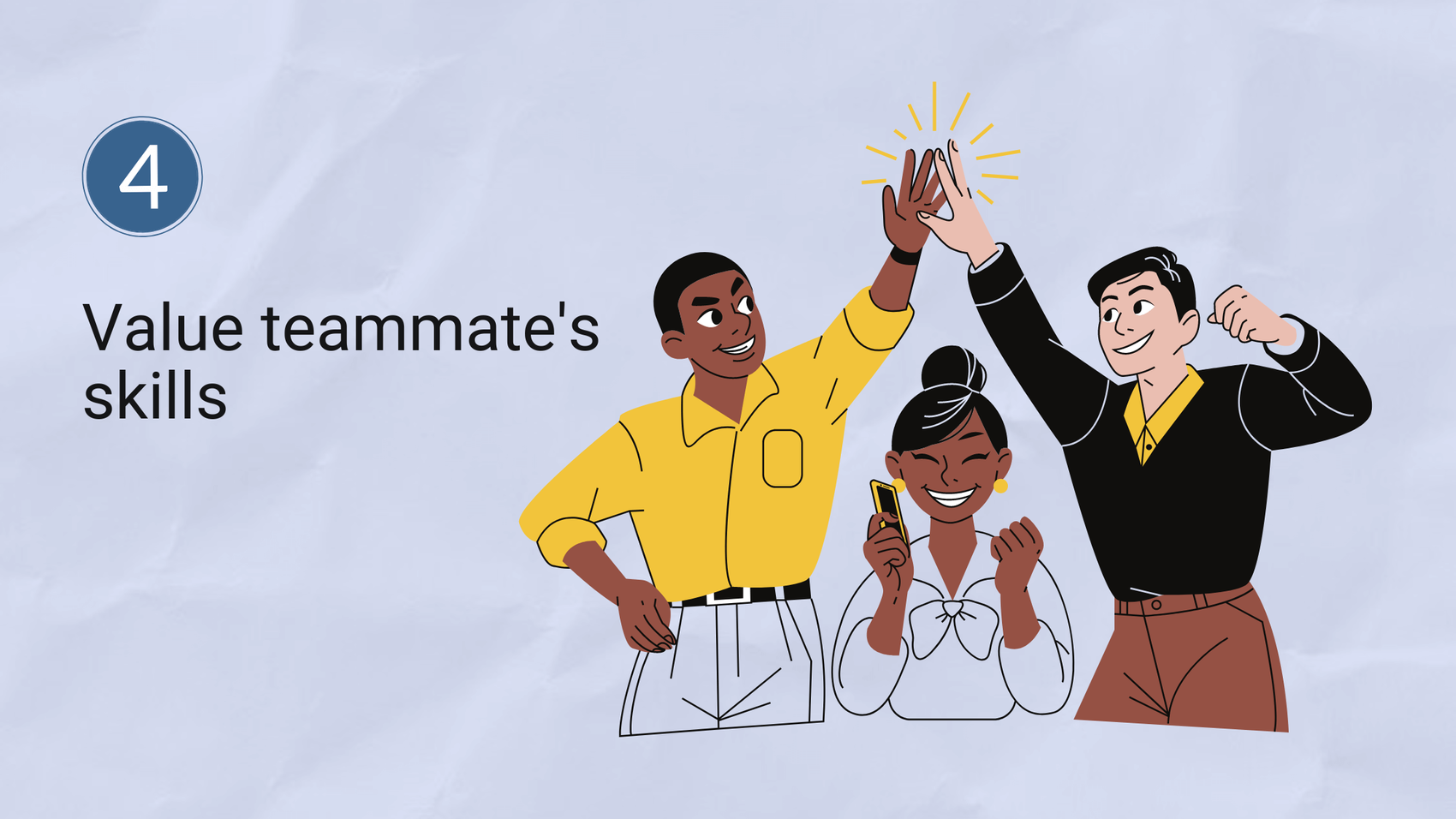 Are you the kind of boss everyone wants to work for? Do your employees drive an extra-long commute just so they can be part of your team? If yes, this article is probably a description of you!
Are you the kind of boss everyone wants to work for? Do your employees drive an extra-long commute just so they can be part of your team? If yes, this article is probably a description of you!
If no, don’t worry! Read on, and by the end of the article you’ll be holding five powerful tools you can use rebuild the ways you interact with your teammates. Soon, everyone will be wanting to transfer onto your team. So, let’s get started!
Understand What Your Employees Are Saying
 “Seek first to understand. Seek second to be understood.” You see, when an employee chooses to place themselves under your authority, they are giving you direct power to influence their success, safety, and happiness. It’s a risk to place oneself under the authority of someone else! This risk feels smaller to your employee when they believe you truly understand them.
“Seek first to understand. Seek second to be understood.” You see, when an employee chooses to place themselves under your authority, they are giving you direct power to influence their success, safety, and happiness. It’s a risk to place oneself under the authority of someone else! This risk feels smaller to your employee when they believe you truly understand them.
Employees want to know that you’re able to visualize life from their point of view. They will evaluate your behavior continually, seeking to discover whether you are faking empathy. Are your words heartfelt?
When your employees believe that your empathy is heartfelt, they will trust that you understand their stories. With this comes the belief that you hold the information needed to make decisions with their best interest in mind. Your understanding and empathy not only build trust—they also inspire employees to support your decisions!
Here are a few phrases to help you understand and empathize with your team.
- Instead of saying, “I understand,” when you actually do not understand, try saying, “Can you help me understand?”
- Instead of saying, “I don’t have time right now,” try saying, “Can you help me honor the commitments I’ve already made for today? I have availability on ______. Let’s schedule a fifteen-minute chat for then.”
- Repeat your teammates words back to them. “So, what I heard you say was ________. Did I understand you correctly?”
Be A Safe Person
 Dishonesty, inappropriate behavior, anger, pride, and incompetency are red flags that destroy an employee’s trust in you as a leader. What kind of behaviors make you want to run away from another person as fast as possible?
Dishonesty, inappropriate behavior, anger, pride, and incompetency are red flags that destroy an employee’s trust in you as a leader. What kind of behaviors make you want to run away from another person as fast as possible?
You can help your employees feel safe around you by taking their concerns seriously. Remember, if someone has been bitten by a particular breed of dog—say, a rottweiler—it’s expected that they will remember their injury whenever they encounter another rottweiler. Even if the specific dog that bit them has been dead for ten years, a distrust of rottweilers is likely to remain. People’s response to emotional wounds is the same. An incident that seems insignificant to you may cause a strong reaction in someone else simply because of past trauma they’ve experienced.
When choosing how you interact with your employees, pay close attention to their body language. If they display guarding, anxiety, or defensive behaviors, seek to understand the reason. You can use a simple observation, such as, “I’m noticing that you seem anxious right now. Is this because of something I am saying, or is there another reason?”
State Clear Goals
 People follow the leader who has a plan. Do you state clear goals to your teammates?
People follow the leader who has a plan. Do you state clear goals to your teammates?
Do you communicate your willingness to take responsibility for accomplishing said goal? Do you know how to invite teammates to bring their skills in specific ways?
Here’s a real-life example:
It is maximum production season in an industrial setting. Everyone on the production floor is stressed. The shift supervisor, Maria, has far too few workers to accomplish today’s quota. What will her response be to this problem?
Maria approaches her teammates one by one, explaining the day’s plan to them. “Julian, can you help me to ____?”, “Cynthia, can you help me to _____?" In return, the workers dig right in and perform their best hustle.
How did Maria inspire such a positive response in the middle of a high-stress environment?
First, Maria has confirmed to her team that as their leader, she’s willing to carry ultimate responsibility for producing today’s quota.
Next, although she feels the pressure of the day’s demands, Maria has chosen to clearly state the goal to each teammate and request their help. Instead of saying “I need you to—”, (which is a true statement but adds pressure,) she’s chosen to ask, “Could you help me to ___?” She has filled in the blank with a task that this specific person holds the skill to complete.
Maria’s choice of phrasing inspires collaboration! The outcome is max production. People know what needs to happen and how they can use their specific skills to help. As a bonus, Maria has displayed emotional intelligence by acknowledging each teammate’s ability to take or deny responsibility.
If you confuse your team, you will lose. You can be the boss everyone loves working for expressing plans and goals in clear, concise language. When you cannot communicate in person, choose other methods of communication that work well for everyone. When you’ve learned to clearly communicate with your entire team, you’ve learned how to win!
Value Teammate’s Skills
 Have you heard of the term “micromanagement”? A micromanager is a person who attempts to control everything. Do not be this person. A controlling employer will lose teammates quickly. A wise leader builds!
Have you heard of the term “micromanagement”? A micromanager is a person who attempts to control everything. Do not be this person. A controlling employer will lose teammates quickly. A wise leader builds!
You can be the leader people want to follow by empowering the skills and natural talents your teammates bring to the table. Build these skills. Do not give in to the illogical lie that a leader must be wiser than the persons being led. You hold strengths and weaknesses just like every other human being. Use your own strengths fearlessly, and pave pathways for your employees to do the same.
Your employees have worked hard to gain the skills they hold. They love when you notice and empower their talents. Praise excellence when you see it. Delegate pieces of leadership to your experienced teammates. Set up an incentive structure to inspire your employees to use and continue building their skills.
Employees appreciate a workplace that provides opportunities for advancement. As you build your people, you are building your company!
Be Relatable
 Rich and poor alike put on their pants in exactly the same way—one leg at a time. Employees grow their trust in you when you acknowledge that you are just like everyone else. It’s not hard to be relatable!
Rich and poor alike put on their pants in exactly the same way—one leg at a time. Employees grow their trust in you when you acknowledge that you are just like everyone else. It’s not hard to be relatable!
Your employees love when you notice what their interests are. Do you hear someone talking about their new baby? Use the new baby as a conversation starter. Ask follow-up questions about your teammate’s family or hobbies. Verbalizing an interest in your teammate’s lives will prove that you think of more than production and profits!
Employees appreciate when their leader displays a willingness to modify and improve. No person or company is perfect, after all. Be sure to incorporate idea-sharing spaces into your staff meetings. Direct your employees towards ways they can share their suggestions and concerns with you. Don’t just listen—also act! When appropriate, follow up on employee suggestions by implementing a change.
Another way to be relatable is by sharing bits of your personality with your employees. When appropriate, use actual life events as examples during staff meetings. Weave a joke or lighthearted story into a protocol update. Choose to speak using words that everyone understands. Share an example of a mistake you made and what you learned from it. The options for relatability are truly endless!
Pro tip: be relatable in a positive way. Don’t give in to the temptation to build relatability with your employees through complaining or other low-class behaviors. Your behavior sets the standard for your entire company. Employees want to respect you, so give them a good reason to!
